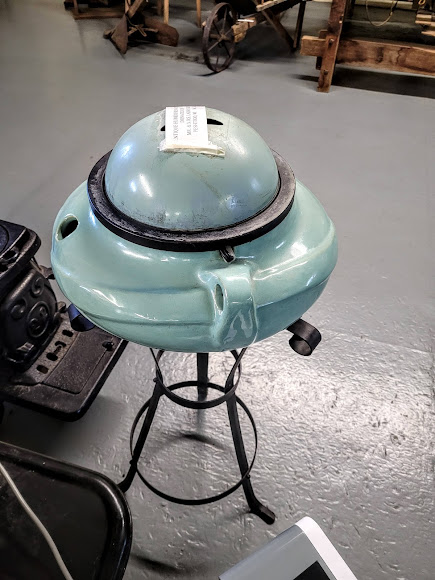We made it to Michigan, and there is an Elks lodge close by, in Marinette Wisconsin. This place is about two blocks before the Wisconsin / Michigan border.We stopped in for a couple of drinks, and pick up pins, before we headed for dinner. How many other places can you go where you have a drink in one state, and dinner 3 miles away in another state?
This is a rendering of what Peshtigo looked like before the fire storm.Within the dotted lines of the photo was the extent of the firestorm. The drought of 1871 was a major factor. Southerly winds kicked up small normally controlled fires which gathered considerable force. These fires became fire tornados. The fire swept a 60 mile stretch north of Green Bay and 50 miles stretch on the Door Peninsula, and this is what became known as the Peshtigo Fire. Total human lives lost were estimated at 1200 to 1500, that does include the folks of Peshtigo.
This rendering is the infamous October night. By the next day over 800 men, women, and children dead... 300 of which were unidentified. The town was burnt to the ground, and like a Phoenix, it came back to life. Because Chicago was a known city, the press spent more time on a fire that only killed about 250 people total. Visit: http://www.peshtigofiremuseum.com.
This is not a UFO model, it is an early humidifier and stand.
The first carpet sweeper was invented in 1860, having brushes and bellows which generated a suction, however, it was not mass produced. 1901 was the first motorized vacuum. In 1906 Kirby created a vacuum that used water for collecting dust. 1909 Eureka Vacuum Company was created. 1920 the first disposable bag was used. 1930 provided the first plastic vacuum. In 1963 Oreck came on the scene. 1978, Dyson wanted to play the vacuum game, and in 1979 Black and Decker thought they should get in the game. 1997 Electrolux; 2002 Roomba. Look at us today.
One step up from the wooden bath tub.
Let's take a quick overview of the museum:The instruments are memories from the Northernaires. The band was started in 1953 at the D.A.R. Boys Club of Menominee. In 1954 they began participating in parades in the UP (upper peninsula), and were well received. 1956 they began competing, and by their last contest in 1968, they won 51 contests, and came in second in 51 of the 135 contests they entered. The Corp was originally called D.A.R. Boys Club Corp up to 1958, when they changed the name to Northernaires.


























































